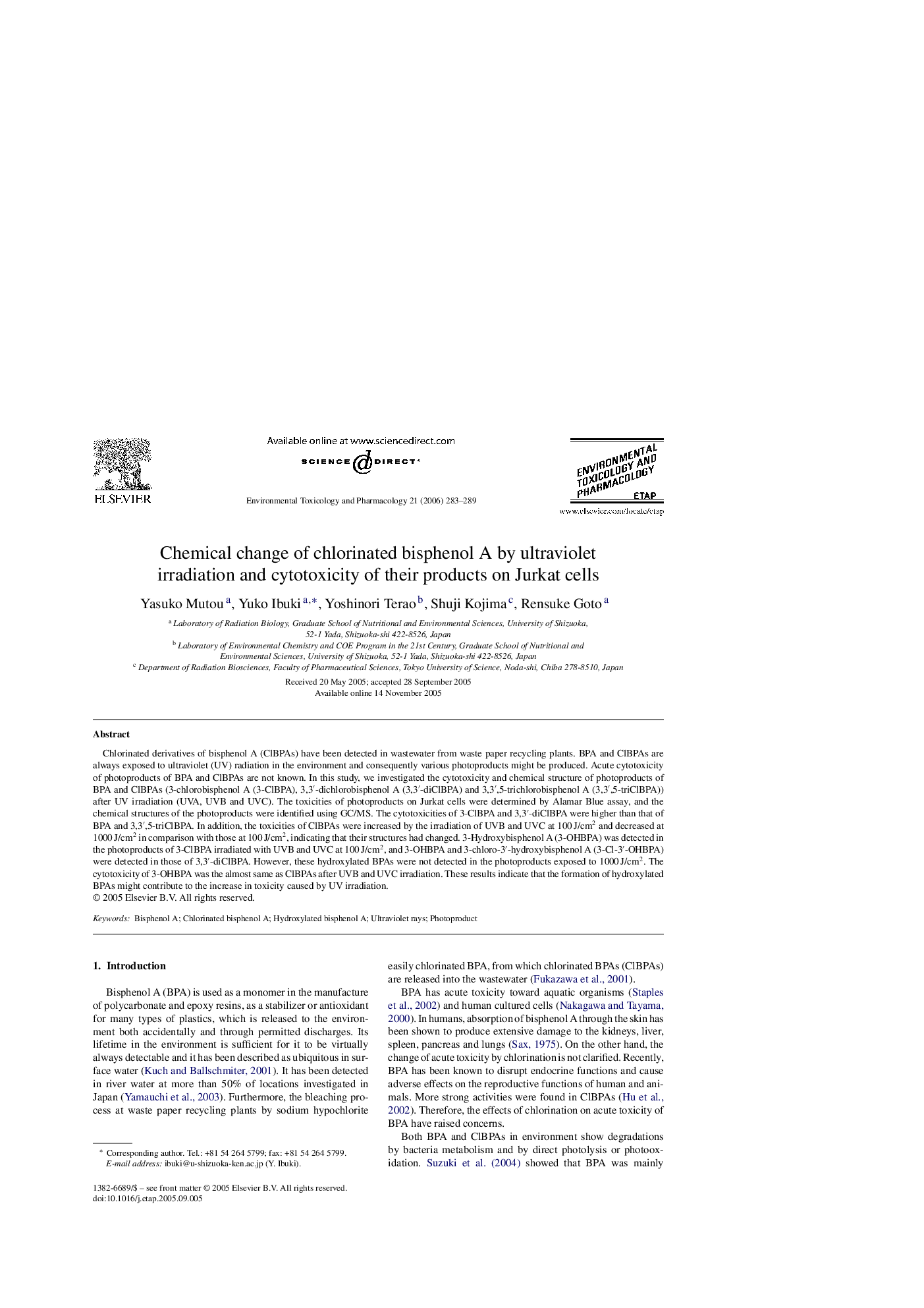| Article ID | Journal | Published Year | Pages | File Type |
|---|---|---|---|---|
| 2584053 | Environmental Toxicology and Pharmacology | 2006 | 7 Pages |
Abstract
Chlorinated derivatives of bisphenol A (ClBPAs) have been detected in wastewater from waste paper recycling plants. BPA and ClBPAs are always exposed to ultraviolet (UV) radiation in the environment and consequently various photoproducts might be produced. Acute cytotoxicity of photoproducts of BPA and ClBPAs are not known. In this study, we investigated the cytotoxicity and chemical structure of photoproducts of BPA and ClBPAs (3-chlorobisphenol A (3-ClBPA), 3,3â²-dichlorobisphenol A (3,3â²-diClBPA) and 3,3â²,5-trichlorobisphenol A (3,3â²,5-triClBPA)) after UV irradiation (UVA, UVB and UVC). The toxicities of photoproducts on Jurkat cells were determined by Alamar Blue assay, and the chemical structures of the photoproducts were identified using GC/MS. The cytotoxicities of 3-ClBPA and 3,3â²-diClBPA were higher than that of BPA and 3,3â²,5-triClBPA. In addition, the toxicities of ClBPAs were increased by the irradiation of UVB and UVC at 100Â J/cm2 and decreased at 1000Â J/cm2 in comparison with those at 100Â J/cm2, indicating that their structures had changed. 3-Hydroxybisphenol A (3-OHBPA) was detected in the photoproducts of 3-ClBPA irradiated with UVB and UVC at 100Â J/cm2, and 3-OHBPA and 3-chloro-3â²-hydroxybisphenol A (3-Cl-3â²-OHBPA) were detected in those of 3,3â²-diClBPA. However, these hydroxylated BPAs were not detected in the photoproducts exposed to 1000Â J/cm2. The cytotoxicity of 3-OHBPA was the almost same as ClBPAs after UVB and UVC irradiation. These results indicate that the formation of hydroxylated BPAs might contribute to the increase in toxicity caused by UV irradiation.
Related Topics
Life Sciences
Environmental Science
Health, Toxicology and Mutagenesis
Authors
Yasuko Mutou, Yuko Ibuki, Yoshinori Terao, Shuji Kojima, Rensuke Goto,
